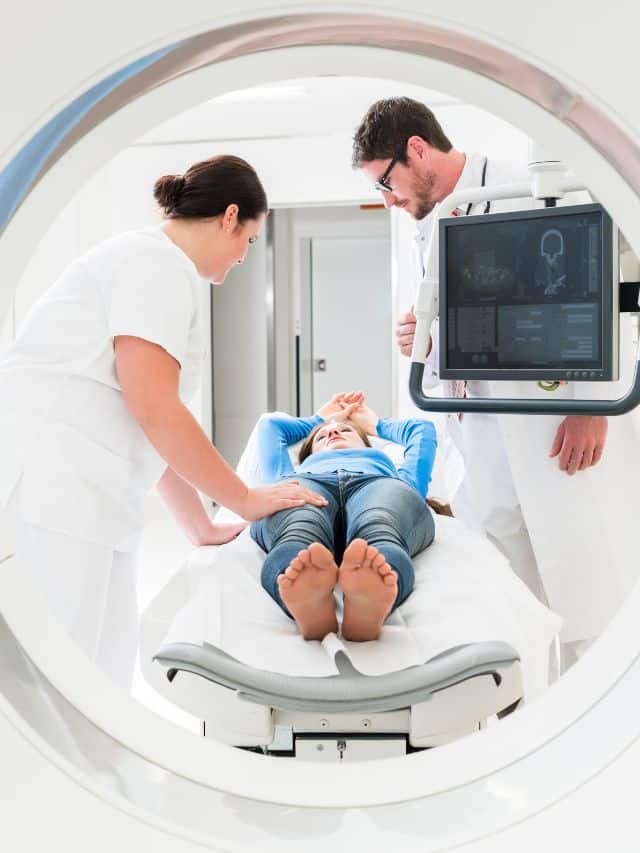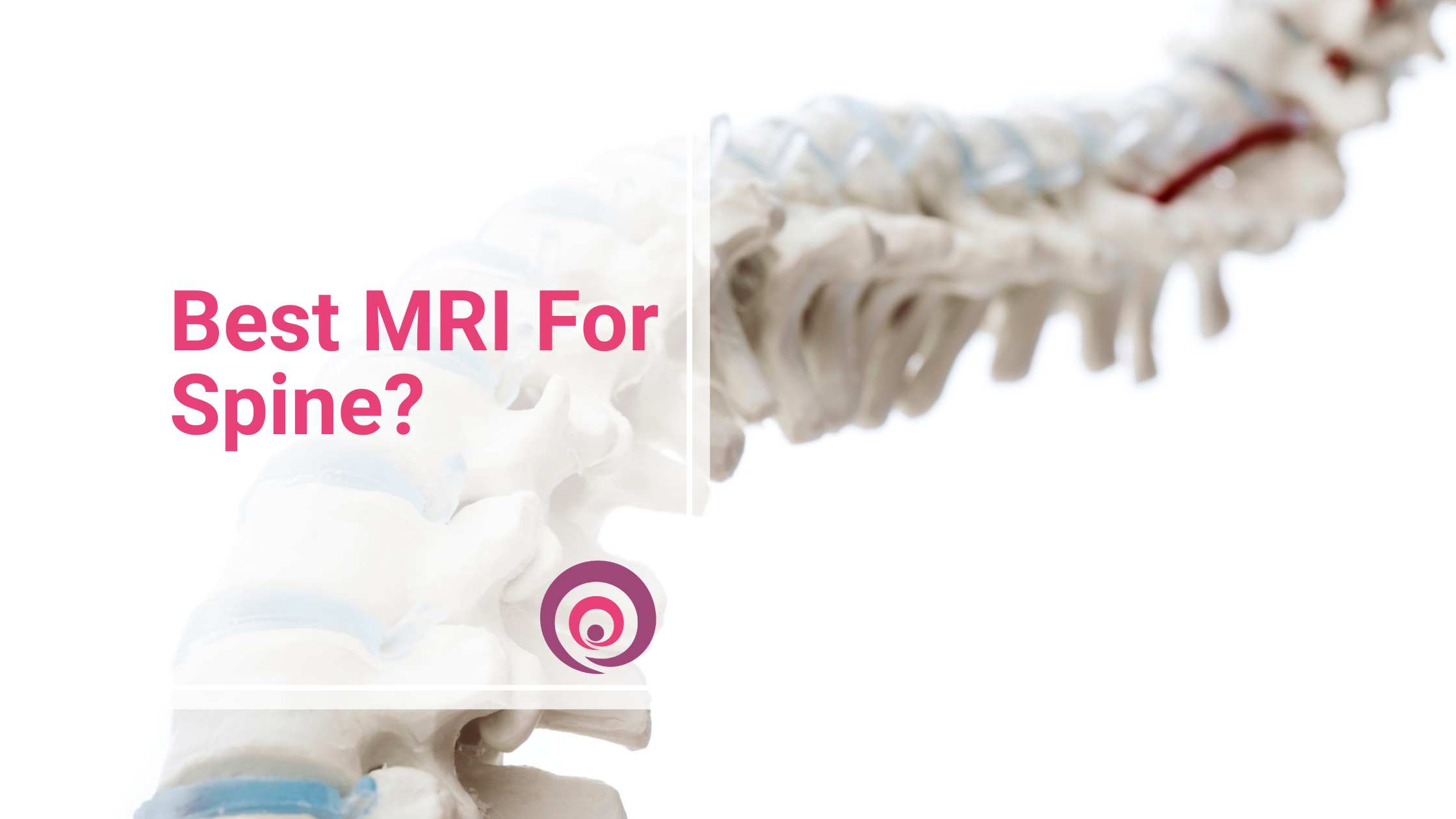Physicians frequently use Magnetic Resonance Imaging, or simply an MRI, to diagnose conditions or monitor the results of treatments. An MRI is a complicated medical procedure that one needs to do with great thought and caution.

Do you ever wonder which MRI is best for the spine?
Yes. This blog serves as a complete guide for your doubts. It is crucial to know about the scan your doctor has prescribed; especially if it is a scan of your spine as it acts as one of the major bones of our body.
What Is An MRI, And How Does It Work?
A magnetic resonance imaging (MRI) scan allows one to view organs, tissues, and other abnormalities. Using radio waves and magnetic fields, the machine creates images of the inside of your body. An MRI is a large, powerful machine that looks like a tube.
Have you ever thought about how an MRI machine works?
During the process, you lie within an MRI scanner, and its strong magnetic field changes the water molecules in your body. When subjected to radio waves, these realigned water molecules create cross-sectional digital images.
Until the doctor tells you to relax, the radiologist will advise you to maintain complete body rigidity during the scan to avoid hazy images.
The length of time the scan takes often varies. A single scan could take three or four minutes or just a few seconds. In addition, the radiologist may urge you to hold your breath during brief scans.
However, the complete procedure could take fifteen to ninety minutes. This variance typically relies on how big an area the radiologist is scanning and how many scans he takes.

You may also hear audible tapping sounds from the tube while you lie inside the scanner. You do not need to be concerned! The electric current in the scanner coils switches on and off, which produces the sound. The nurse will give you headphones or earplugs to wear.
Therefore, do not tense up!
The MRI machine can create a 3D or 2D image. With the scan, it becomes simpler for medical professionals to examine your bones, tissues, and organs to check for cancer, brain tumours, and other problems.
However, do not be alarmed! The scan is quite safe!
You will not feel pain or know that the radio waves or magnetic fields are on.
However, the doctor may put you under sedation to finish the test if you suffer from claustrophobia, or a fear of small, enclosed spaces.
If you’re thinking about which MRI is best for the spine, then you’re at the right place!
Read up to know more!
An MRI can be used to check for injuries, structural abnormalities, or other conditions such as the following in the spinal cord:
- Growths
- Abscesses
- Birth defects
- Aneurysms
- Venous deformities
- Injury to the spinal cord
- A subdural haematoma is an injury that occurs directly beneath the brain’s dura mater.
- Multiple sclerosis, degenerative illnesses, hypoxia encephalopathy which is a brain disorder brought on by oxygen deprivation, and encephalomyelitis which is an inflammation or infection of the spinal cord.
- Brain fluid or hydrocephalus.
- The degeneration or herniation of spinal cord discs.
- Help in the planning of spine operations, for example, spinal fusions or the decompression of pinched nerves.
To aid in treating a brain ailment, MRI can also pinpoint the precise position of a functional centre, which is the area of the brain that regulates a certain function, like speech or memory.
There are several other reasons why your doctor might have recommended an MRI of the spinal cord.
The patient’s needs and the suspected source of discomfort will determine which sort of MRI is ideal for the spine. The following are a few MRI kinds that could be beneficial for the spine:
- The 3-T MRI is useful for the diagnosis and detection of diseases such as aneurysms, spinal disc herniations, and compression of the spinal cord. Moreover, it can aid in visualising the discs, facet joints, spinal cord, and nerve roots.
- MRI of the lumbar spine: This test can identify conditions that cause sciatica and lower back pain, such as herniated discs, spinal stenosis, or nerve compression.
- MRI with contrast material: The most effective MRI for assessing spinal canal masses is this.
- An upright or weight-bearing MRI: This may be more suitable for those whose symptoms of spinal stenosis intensify when they stand.
- White-bore MRI: People who are overweight or claustrophobic may benefit more from a wide-bore or open MRI.
How Do You Prepare For A Spine MRI?
The same procedures apply for MRIs of the back and spine as they do for any other type of MRI.
The rules are pretty simple!
Before your appointment, you can eat, drink, and take medications as usual, unless your doctor has prescribed an MRI with contrast.
You should refrain from eating and drinking for four hours before your visit if you are having a scan with contrast dye, which is a solution used to measure blood flow. This is so that the contrast may move to track internal body activity and display it on the scan.
Additionally, since injecting the contrast dye before the start of your scan requires additional time, you should arrive at your appointment fifteen minutes early.
Discuss other options, such as other equipment or sedation, with your doctor if you are claustrophobic or apprehensive about undergoing an MRI.
If you choose to be sedated, you will need to make arrangements for someone to pick you up after your scan and arrive early for your appointment.
Do not worry about the medicine as it is perfectly normal and safe!
You will be monitored thoroughly throughout the procedure.
Call to Book Appointment at 8699572364
Locations Near You
- Sector 20
- Sector 32
- Sector 16
- Sector 11
- Sector 19
- Sector 82, Mohali
- Sector 74, Mohali
- Sector 63, Mohali
- Kharar
- Zirakpur
- Panchkula
Conclusion:
Now that you’re aware of which MRI is best for the spine, you can go ahead and get the procedure tension-free!
An MRI of the spine is a painless procedure that will help your doctor figure out the best course of treatment. The most common type of spine MRI that your doctor recommends is a 3-T MRI. But, there are other types of MRIs also. If you have further doubts about the scan, feel free to drop by your doctor’s office with questions.
For more information or to schedule a CT Scan in Chandigarh, contact us at 8699572364. You can also follow us on social media to stay updated:
- Instagram: @mrichandigarh
- Facebook: MRI Chandigarh
- X (formerly Twitter): @MRIChandigarh
- LinkedIn: MRI Chandigarh


Comments